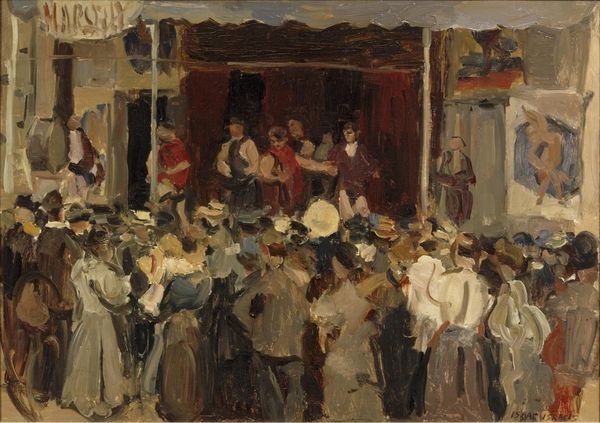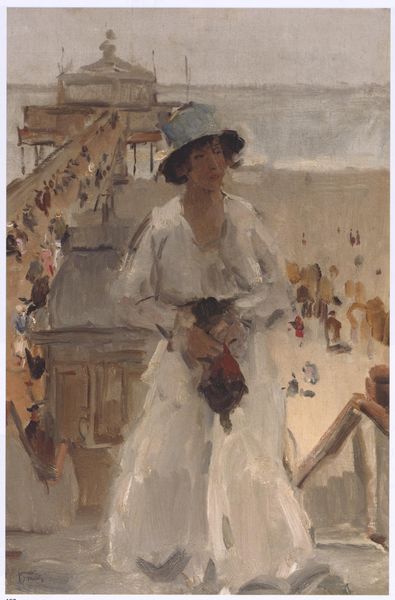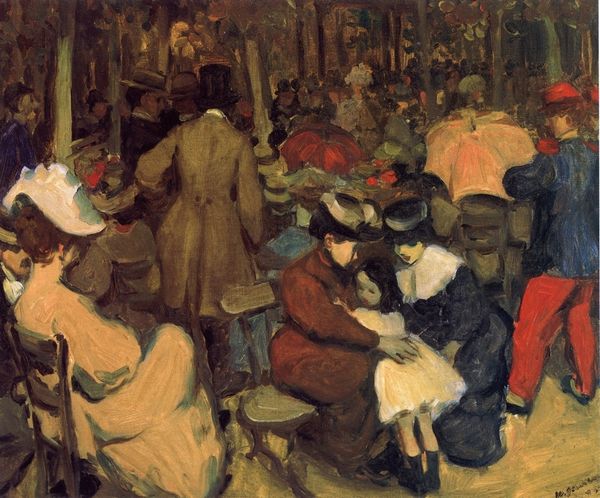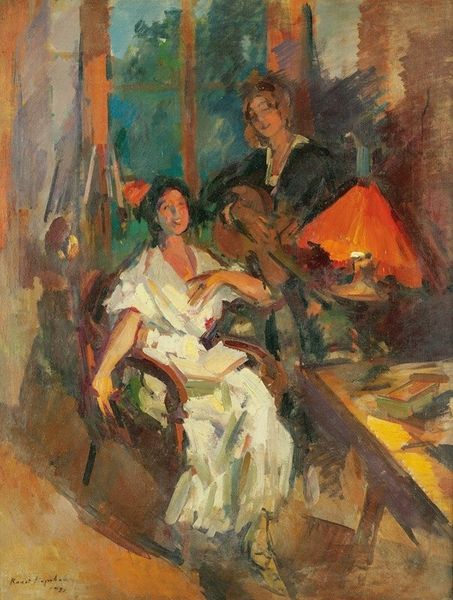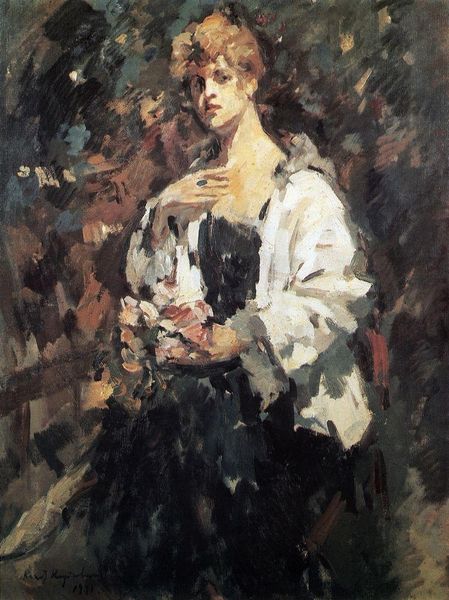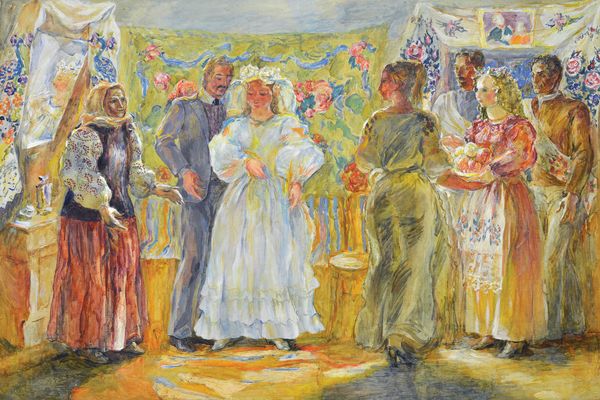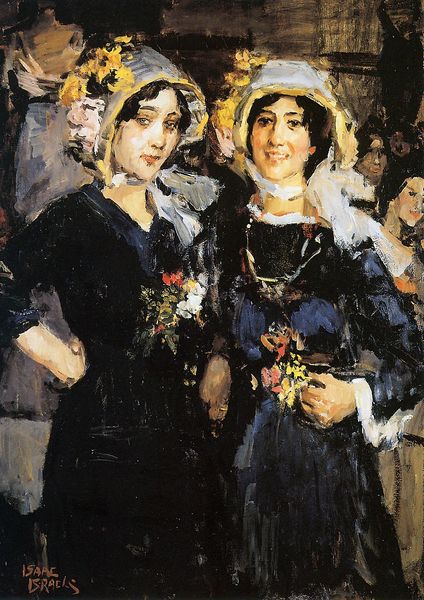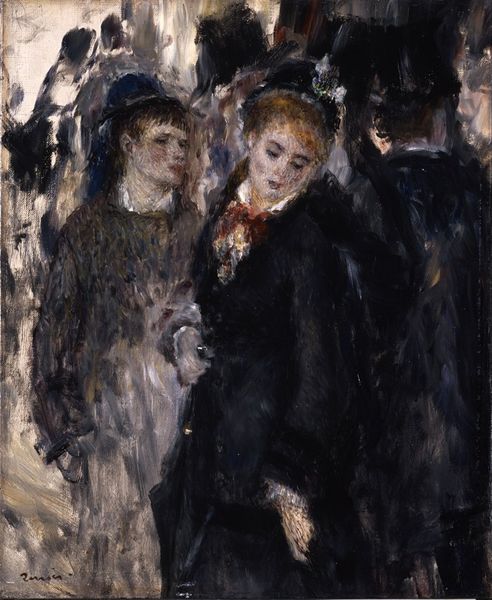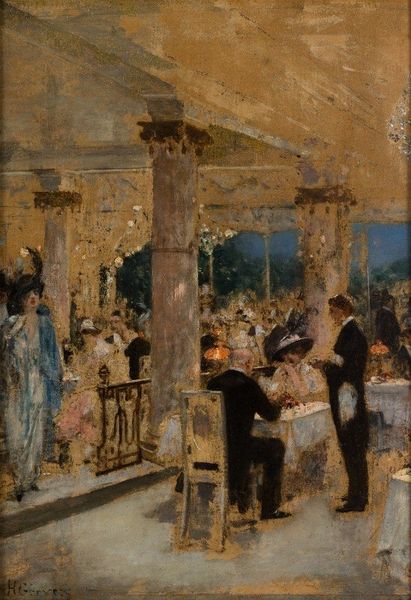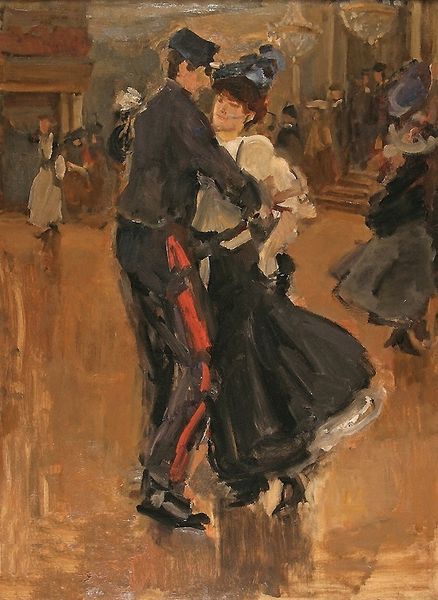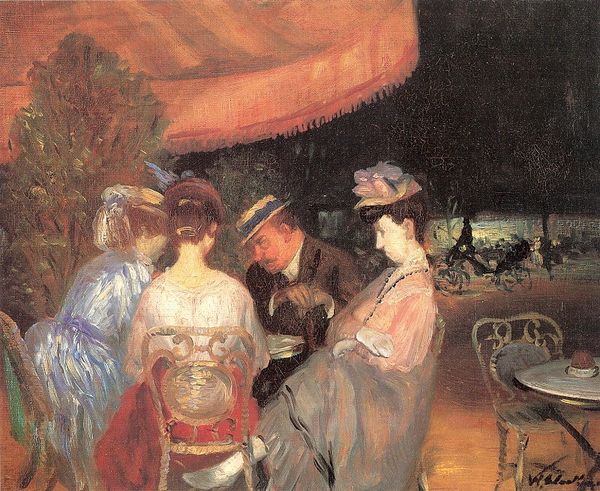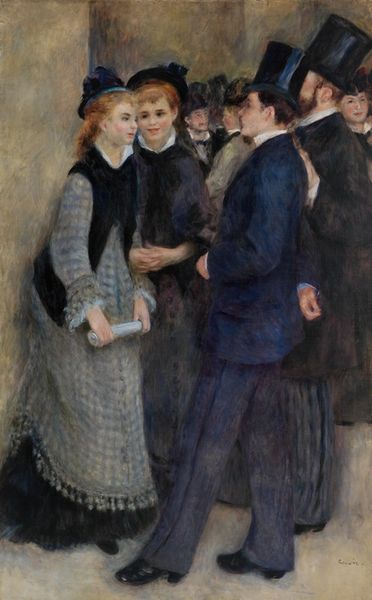
Copyright: Public domain
Curator: Well, right off the bat, it's that dreamy haze, isn’t it? It feels like witnessing a half-remembered fashion show. Editor: Indeed. Isaac Israels painted "Dress Show at Hirsch" around 1911. Painted with oil on canvas, it captures a fleeting moment within the fashionable Hirsch Salon. Curator: Fleeting is exactly the word. Look at the brushwork! It’s almost shorthand for figures and fabric. Each stroke does so much to imply form, texture, the rustle of skirts. The overall color scheme, it’s predominantly pastel. So refined! Editor: The scene reflects the social codes of the era, with women occupying roles primarily as consumers or objects of display. We're seeing the commercialization of femininity playing out. Note also the subtle tension between the individualized model and the rather homogenous crowd—a contrast, perhaps, reflecting anxieties about individuality versus conformity in an increasingly consumer-driven society. Curator: Anxieties and aspirations too, don't you think? The way the model looks out at us... She appears so self-aware. She really embodies that era of emerging female self-possession. Editor: I agree. Considering this was a period of significant social change, witnessing nascent movements for suffrage, the figure carries a resonance beyond the simple display of fashion. One wonders: is Israels consciously imbuing her with an air of quiet defiance, or is that projection on our part? Curator: Oh, now that’s the fun part, isn’t it? Half the joy is what we bring to it. I also see the painter’s love of capturing that liminal, in-between space, like the shift from artificial light into the deeper shadows. Editor: The painting's Impressionistic style and the choice of subject matter invite a discussion around how the elite classes consume culture and fashion. And further, it is really intriguing to think of it through the theoretical lens of, say, Thorstein Veblen’s ideas on conspicuous consumption. Curator: Yes, the showiness is not the point; instead it’s about something much more subtle, more understated, more…deliciously vague. It whispers secrets that are just out of reach. Editor: A wonderful point! All this, really, invites us to think critically not only about the historical context, but also about our own roles as viewers interpreting this scene, engaging with art, then and now.
Comments
No comments
Be the first to comment and join the conversation on the ultimate creative platform.
